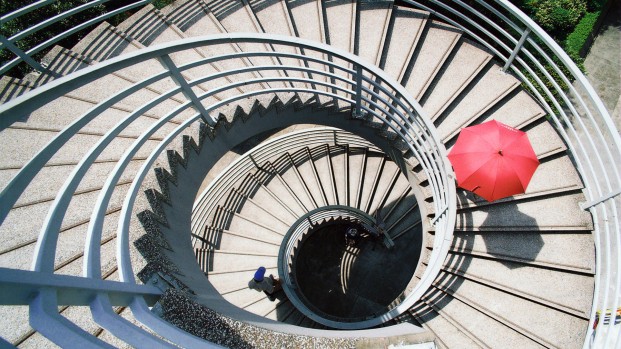Every year, on average, 40 Europeans die in terrorist attacks. When you compare the policies and billions plown down into this number, you quickly discover that we should not be spending billions to fight terrorism, but to fight bathtubs. Over five times as many people drown in bathtubs every year.
I’m a very strong proponent of evidence-based policymaking and putting quality requirements on the legislative process, and therefore, I require hard data to justify decisions and policy. When researching this topic, the strangest thing about the number of fatalities from terrorism wasn’t the number itself, but how hard it was to find. It seemed to never have been published anywhere by any single European bureaucracy. It seemed that policymakers weren’t interested in quantifying the threat.
You can find lots of data on terror in Europe (causes, groups, police forces, etc) when searching for it. You just can’t find what danger it actually poses.
So I needed to do the basic research myself, and tallied all terrorist attacks in Europe over the years 2000-2009 from the RAND Database of Worldwide Terrorism Incidents. 403 people died in Europe over a decade from terrorism, almost half of which in Madrid in 2004, and an additional 50-ish in London in 2005. This gives us an average of 40.3 people per year.
This number needs to be put in perspective, to understand if 40 people per year is a lot or a little. Apparently, it must be a terrible lot, since so many repressive policies are justified by this number, right? So next, we go to the European Detailed Mortality Database to compare this number to other causes of death in Europe.
To our surprise, we find that drowning in bathtubs kills over five times as many people as terrorism – 223 per year! We need to pull all the taxpayer billions from fighting terrorism immediately and put them to work against bathtubs. They are more than five times as dangerous as terrorism!
Even more, over six times as many die from falling off chairs – 254 people per year. We should be spending billions fighting chairs!
Worse still, 941 people per year die from falling out of beds – 941 people per year. That’s over twenty times as many as die from terrorism.
This leads us to the conclusion that fear-mongering policymakers don’t want to see published in hard data:
The data doesn’t justify the decisions and policy.
But we haven’t gotten to the worst European killer in this collection yet. One that kills over a hundred times more than terrorism. This evil killer, this savage monster that reaps European sons and daughters like wheat in the field. This cause of death reaps 4,362 people per year.
I speak, of course, of the staircase.

Staircases like this one kill us because they hate our freedoms and want to destroy our way of life.
4,362 people die every year in Europe from falling down staircases – over two orders of magnitude more than terrorism. Since we’re spending billions fighting terrorism, we need to spend at least trillions fighting staircases, according to the data.
Now, these numbers are presented to show that the danger from terrorism is minute compared to other causes of death, and that taxpayer funds spent fighting terrorism isn’t justified by the actual threat as displayed by hard data. Thus, there are ulterior motives. Control, perhaps. Profit, perhaps. Scaring people into submission, perhaps. Excuses for wiretapping and surveillance, perhaps. All of the above, perhaps.
To defend the policies, you’ll have no hard time at all finding a politician who will react to these numbers claiming that the number of fatalities from terrorism is so low just becausebillions are spent fighting it. This kind of bullshit statement ranks straight up there with “We pray to these rocks every night for the sun to rise again in the morning, and therefore, the sun has kept rising every morning. Our method has been a remarkable success.” In short, correlation does not imply causation – the therefore in the middle of the sentence is plain made-up bullshit.
For another illustration of the deception in this reasoning, consider the statement “Nine out of ten people who die in mountainside skiing accidents lack flotation life jackets.”
Rather, I have been anything but impressed with the forces spending these taxpayer billions. You hear the occasional “terror plot foiled!” in the media among cries of success, but once you start scratching on the surface, it turns out that the suspects were all acquitted for very good reason. I see James Bond wannabes who mostly behave like the clumsyKling and Klang from Pippi Longstocking or like the fumbling les Dupondts from the Tintin albums. In Sweden, when the security police were caught breaking the law and the constitution, they were even let off for being too incompetent to stand trial.
We could be saving many, many more Europeans by spending those billions fighting bathtubs. And staircases.
The key point of this article is this:
The hard numbers on terrorism invalidate the current policies mercilessly.
ok as you can tell i never wrote this , but it makes some good points , obviously there is a threat from terrorists but compared to other threats to human life its pretty small , heres a few facts i found myself
five people die on Britain’s roads every day
Reported Road Casualties in Great Britain, 2011
Killed 1,901
Seriously Injured 23,122
Common causes of these unnecessary tragedies include:
Speeding
Around 430 people a year are killed in crashes in which someone exceeds the speed limit or drives too fast for the conditions.
Drink Driving
Around 250 people die a year in crashes in which someone was over the legal drink drive limit.
Seat Belt Wearing
Around 300 lives each year could be saved if everyone always wore their seat belt.
Careless Driving
More than 300 deaths a year involve someone being "careless, reckless or in a hurry", and a further 125 involve "aggressive driving".
At-work
Around one third of fatal and serious road crashes involve someone who was at work.
Inexperience
More than 430 people are killed in crashes involving young car drivers aged 17 to 24 years, every year, including over 150 young drivers, 90 passengers and more than 180 other road users.
your thoughts are welcome as always , oh and wear your seatbelts ;D

























